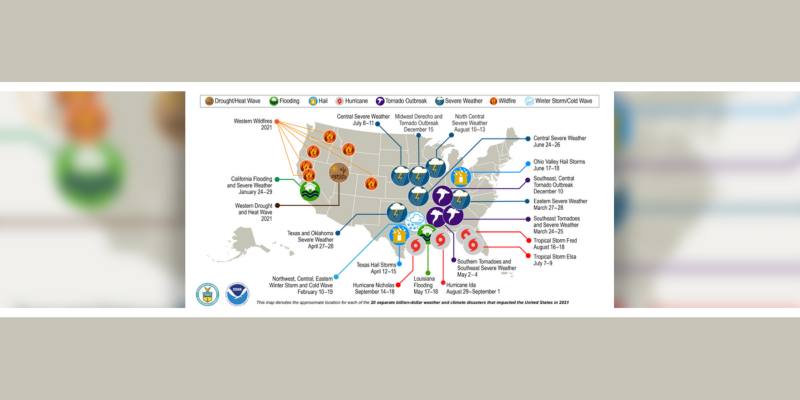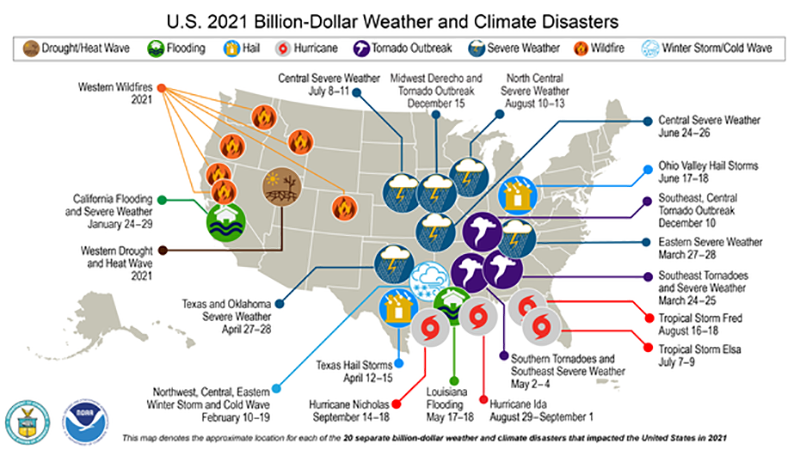
Energy resilience is becoming an increasingly important issue for electric cooperatives as extreme weather events like wildfires, hurricanes and winter storms threaten the stability of critical infrastructure and pose a risk to the lives of member-owners.
The alarming rise in losses related to extreme weather events underscores the urgency for rural communities. In 2021, there were 20 separate billion-dollar weather-related disasters, costing a cumulative $145 billion and the deaths of 688 people, according to a report from the National Oceanic and Atmospheric Administration (NOAA).

Winter Storm Uri, which brought record cold temperatures across the lower 48, was a major driver behind these costs. The storm caused power grids to fail across the U.S., most notably in Texas, where 5.2 million homes and businesses lost power. Uri underscored the challenges of operating energy infrastructure and maintaining reliability amid increasingly intense weather.
Wall Street is paying attention to energy resilience as well. Mainstream investors have ramped up pressure on electric utilities to disclose, in financial terms, the risks associated with extreme weather. Increasingly, climate risk is becoming not just an environmental issue, but one that has a direct impact on a company’s financial standing and reputation.
One way to reduce long-term risk to people and property from extreme weather events is to identify priority vulnerabilities and build out resilience efforts accordingly. Many electric cooperatives are already doing this through a combination of new and traditional approaches.
Cooperatives Take Different Approaches to Improve Energy Resiliency
Some cooperatives, such as Poudre Valley Rural Electric Association in Colorado, are finding that microgrids with long-duration energy storage can help strengthen reliability in remote areas that are particularly vulnerable to extreme weather events. Others, like Great River Energy in Maple Grove, Minnesota, are embracing innovation to explore storage that can support load for several consecutive days.
Electric cooperatives are also utilizing a variety of strategies for distribution system hardening. When it comes to hardening utility pole infrastructure, approaches range from new technologies like “life-jacket” enhancements and fire-resistant mesh to traditional pole relocations.
The frequency and severity of extreme weather events has also prompted some electric cooperatives to switch from above-ground power lines to underground feeders. These systems have concluded the long-term benefits of undergrounding lines outweigh the short-term costs, even if there are also some drawbacks.
Cooperatives are also taking steps to improve how they plan for resilience. These include everything from enhancing existing emergency response plans and having the right technologies in place to detect risks from storms, but also workforce planning and, of course, having a strategy to pay for any new capital investments, including how to leverage funding opportunities through the federal government.
Regardless of the specific approach taken, electric cooperatives share a commitment to protecting their member-owners and communities while ensuring reliability of uninterrupted service—the ultimate measure of resilience.
To learn more about the specific approaches electric cooperatives are taking, be on the lookout for more information in Solutions about a soon-to-be released CFC Special Report, “Building Energy Resilience: How Electric Cooperatives Are Mitigating Extreme Weather Effects.”
